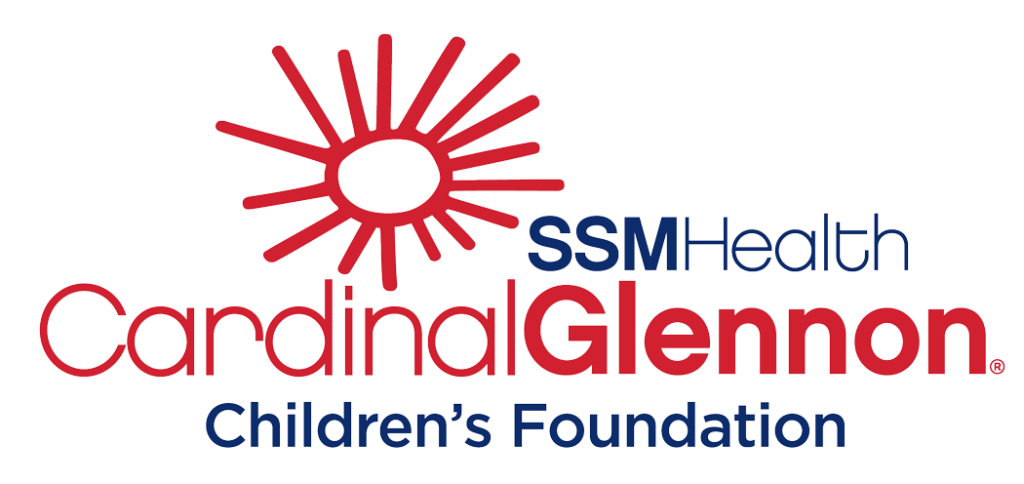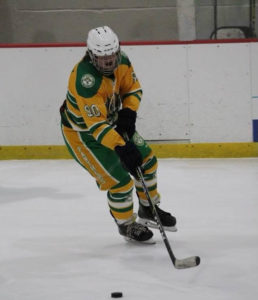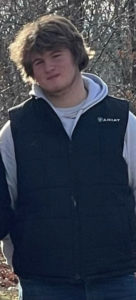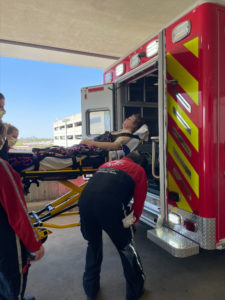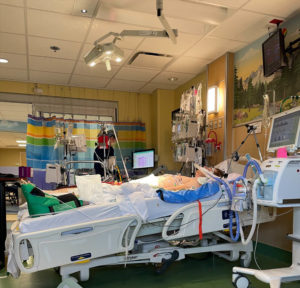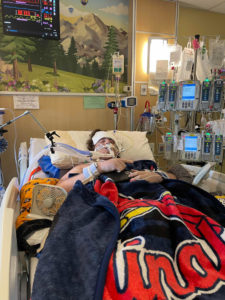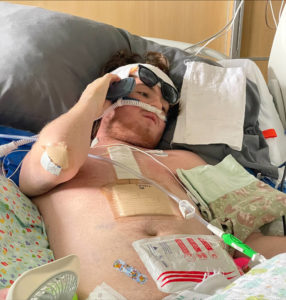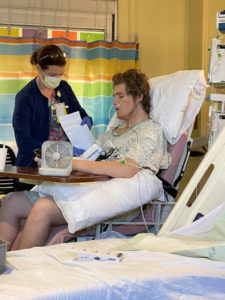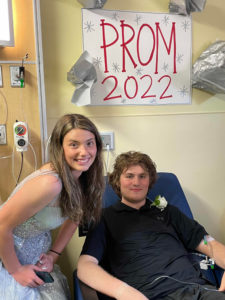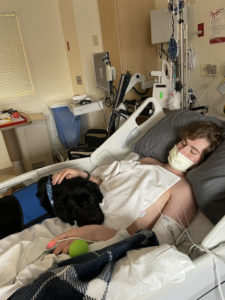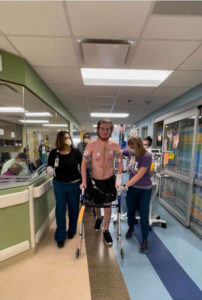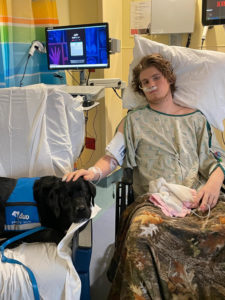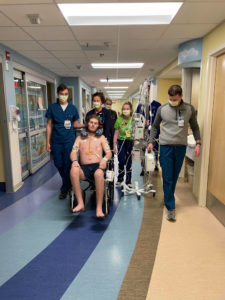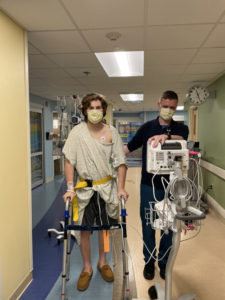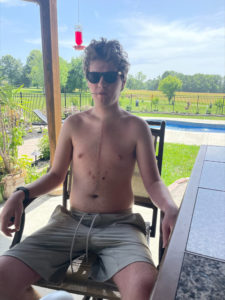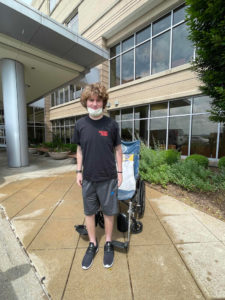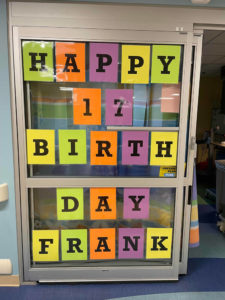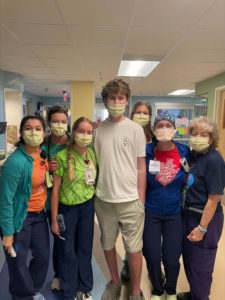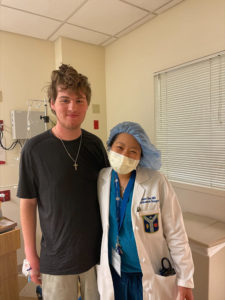Our Patients:
Frank Marchesi III
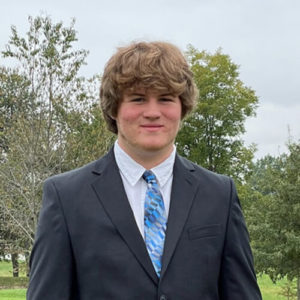
Frank Marchesi, III., of O’Fallon, MO was a healthy 16 year-old who enjoyed hanging out with his friends, working out and playing hockey. Life changed abruptly on 03/29 when Frankie was taken to SSM Health St. Joseph Lake St. Louis ER for chest pains. After blood work and an EKG, Frankie was diagnosed with Pericarditis. He was then transferred to SSM Health Cardinal Glennon Children’s Hospital where he thought he would be monitored for a few days. A day into his hospital stay, Frankie was rushed to the Pediatric Intensive Care Unit and placed on a ventilator. His condition continued to deteriorate and Frankie’s parents were informed their son was in heart failure. Frank Jr and Jamie were devastated and confused, not knowing how their healthy, active son could possibly be so sick. In order to save his life, Frank was placed on ECMO (extracorporeal membrane oxygenation). ECMO is similar to heart-lung bypass machines used during open-heart surgery. When someone is on ECMO, blood gets oxygenated, by an artificial lung, and gets delivered to the whole body, using an external mechanical pump. The machine maintains the blood flow and oxygenation to the body’s vital organs while the patient recovers, by allowing the heart and lungs to “rest” over several days to weeks.
While on ECMO Frankie underwent aggressive treatment with antiarrhythmic medications and immunosuppressive therapy and was fed with a combination of Total Parenteral Nutrition (TPN), also known as intravenous or IV nutrition feeding, and gastric feedings. Frankie was also diagnosed with and being treated for Rheumatic Fever, which is extremely rare. He had fluid around his heart, which required careful management and therefore frequent echocardiograms, EKG’s and labs. They were also evaluating the need for assistive devices or possible heart transplant.
“Thankfully, after multiple days of aggressive therapy,” said Jamie, “Frankie’s heart function stabilized. He was able to come off ECMO, but he stayed on the ventilator to give his heart some time to rest. Unfortunately, he had to celebrate his 17th birthday in the PICU. But our Music Therapist worked with the team to lighten Frankie’s sedation medicine enough so that he could hear and react to us singing him ‘Happy Birthday’. It was just as much as a present for us as it was for him,” Jamie said. “The next day we got the present of him coming off the ventilator,” said Jamie.
Over the next few weeks, Frankie dealt with withdrawals and hallucinations coming off sedation and a transition from intensive care to recovery on the Transitional Care Unit. He received a great deal of physical therapy, occupational therapy, speech therapy and more. On April 19th, Frankie was able to go home after 21 long days. He would be very restricted – not able to do any sports or strenuous physical activity for at least six months, and a long list of medications that he had to take each day.
On April 21st, Frankie had a follow up appointment with the Cardiologist and was admitted back to the Pediatric Intensive Care Unit. The following day, he had an emergency cardiac catheterization and a biopsy of his heart. The infectious disease team, the rheumatology team, the cardiology team and the neurology team were all discussing Frankie’s worsening heart condition as they awaited biopsy results. A cardiac MRI and a brain MRI were scheduled. “It was so tough on Frankie. He knew he was going to miss another huge milestone. He was going to miss prom. Fortunately, Frankie’s nurses and the Child Life team worked together to decorate his room. They fixed Frankie’s hair, and arranged for his best friend to walk in with her dress on to surprise him and have their pictures taken together. It was the sweetest thing ever and really lifted his spirits,” Jamie said.
Later that week, it was noted that Frankie’s troponin levels had tripled. Elevated cardiac troponin is a diagnostic marker of damage to the heart. Fortunately, Frankie had no evidence of clogged arteries or blood clots and it was confirmed that he had not had a heart attack. Doctors sent blood to test for thousands of bacteria’s, viruses and funguses – all of which came back negative. Frankie’s EKG at this time was not showing much change; however, his echocardiogram showed a moderately to severely depressed heart function with a lower ejection fraction rate. Biopsies from both SLU and Cardinal Glennon showed that Frankie was having an autoimmune response that triggered an acute lymphocytic myocarditis. It also confirmed a diagnosis of Giant Cell Myocarditis (GCM) is a rare cardiovascular disorder that occurs for unknown reasons (idiopathic). It is characterized by inflammation of the heart muscle (myocardium), a condition referred to as myocarditis. Giant cell myocarditis is rare and a rapidly progressive type of myocarditis. Patients present with arrhythmias and rapidly progressive congestive heart failure symptoms, but may also present with sudden cardiac death. The arrhythmias may result from active inflammation, myocardial infiltration by giant cells, or residual myocardial scarring as a side effect of chronic inflammation.
On May 1, 2022, Frankie went back on ECMO. His care team prepared Jamie and Frank that he would most likely need an LVAD (left ventricular assistive device) followed by a heart transplant. On May 2nd, Frankie’s heart stopped. He went immediately to surgery where they inserted four cannulas into his chest. He was supported by CentriMag which is a ventricular assist device designed to support both his left and right ventricles. On May 4th, just two days later, Frankie went on the transplant list. On the days that followed, he was very unstable. He had a lot of internal bleeding and fluid surrounding his lungs. Every measure was being taken to prepare his body to be ready for heart transplant surgery. “On May 8th, we got word that there was a possible match for Frankie,” said Jamie. “His surgeon flew out to analyze the heart and officially accepted it that day,” Jamie said.
Frankie received the gift of a new heart on May 9th. Three days later, Frankie was able to get his breathing tube removed. “Even though he got his tube out, his lungs had taken a beating,” said Jamie. “He was on high flow nasal cannula to help support his lungs and right ventricle, and was getting breathing treatments every three hours to help break up all the mucus in his chest since his body was too weak to cough it up,” Jamie said. “Frankie was going to need to work really hard with PT to strengthen up his muscles. The speech therapist had to work with him on things like swallowing, which had become a challenge. We hoped he could start taking some of his medications orally since he had trouble tolerating them through his feeding tube,” Janie said.
On May 16th, Frankie had an episode that mimicked a seizure. It was thought he was experiencing Psychogenic Non-Epileptic Seizures (PNES) – attacks that look like epileptic seizures but instead are caused by stress, or a psychologically traumatic event. He also had some light sensitivity and headaches. An Ophthalmologist did a thorough exam of his eyes. He also had an MRI and a spinal tap to rule out any brain infections. The MRI showed he had a small lesion or pocket on the brain thought to be an “air pocket” which most likely occurred during one of his surgeries. Frankie’s lungs still needed some more healing, as well. He used a breathing spirometer throughout the day and also worked with respiratory therapy and physical therapy daily. Frankie’s first cardiac catheterization and biopsy post-transplant revealed that his cardiac output was low and his right ventricle was still really stiff. They also determined that his right diaphragm was not working as well. They were hopeful that over time and with increased activity and medication that the right stiffness would get better. The heart biopsy showed no signs of rejection.
At the end of May, Frankie transferred to the Transitional Care Unit. “His first few days were hard,” said Jamie. “Frankie went through medication withdrawals as he had completely come off all pain and anxiety medications. Physically, Frankie was improving daily. Emotionally, he was having some major up and downs. He learned some of his lifelong restrictions and that he most likely wouldn’t be able to play hockey his senior year. But he’s determined to prove that he can and will be part of the season one way or another. We’re so blessed to have a village of people cheering him on daily,” Jamie said. “As we navigate this new life, he will have to continue to embrace these challenges,” Jamie acknowledged.
After 68 long days, Frankie was discharged home on June 7, 2022. “It was a bittersweet day,” Jamie said. “We definitely miss our Cardinal Glennon family. They sent him off with a farewell parade through the TCU and ICU. It was extremely emotional strolling through the hallways,” said Jamie.
Since Frankie’s discharge, Jamie says, “The medications are still a balancing act. We are back at Cardinal Glennon weekly for labs, EKG’s, echocardiograms and follow up appointments with both Cardiology and our Immune Infectious Doctors. He will have regular cardiac cath’s, biopsies and follow up studies to check for any seizure activities and rejection. Since leaving the hospital, we have been working on getting him into Cardiac Rehabilitation. He will be evaluated at Ranken Jordan Pediatric Bridge Hospital, and we look forward to seeing his progress since he has such a desire to bridge his way back to the gym,” says Jamie. We are beyond blessed by all the prayers and support. The first year is going to be critical,” says Jamie. “Overall, the progress has been great. Physically, Frankie is getting stronger each day.
“Being immune-compromised, Frankie is very limited on what he can do. Emotionally, this is tough for him, but he looks forward to his weekly visits at Cardinal Glennon, and he is so incredibly thankful for the wealth of support from his family and friends,” Jamie says. “GOD gave him a second chance at life and he will embrace these changes and also honor his donor’s heart. We are hoping one day, we can meet this family and express our sincerest gratitude for saving our boys life.”
